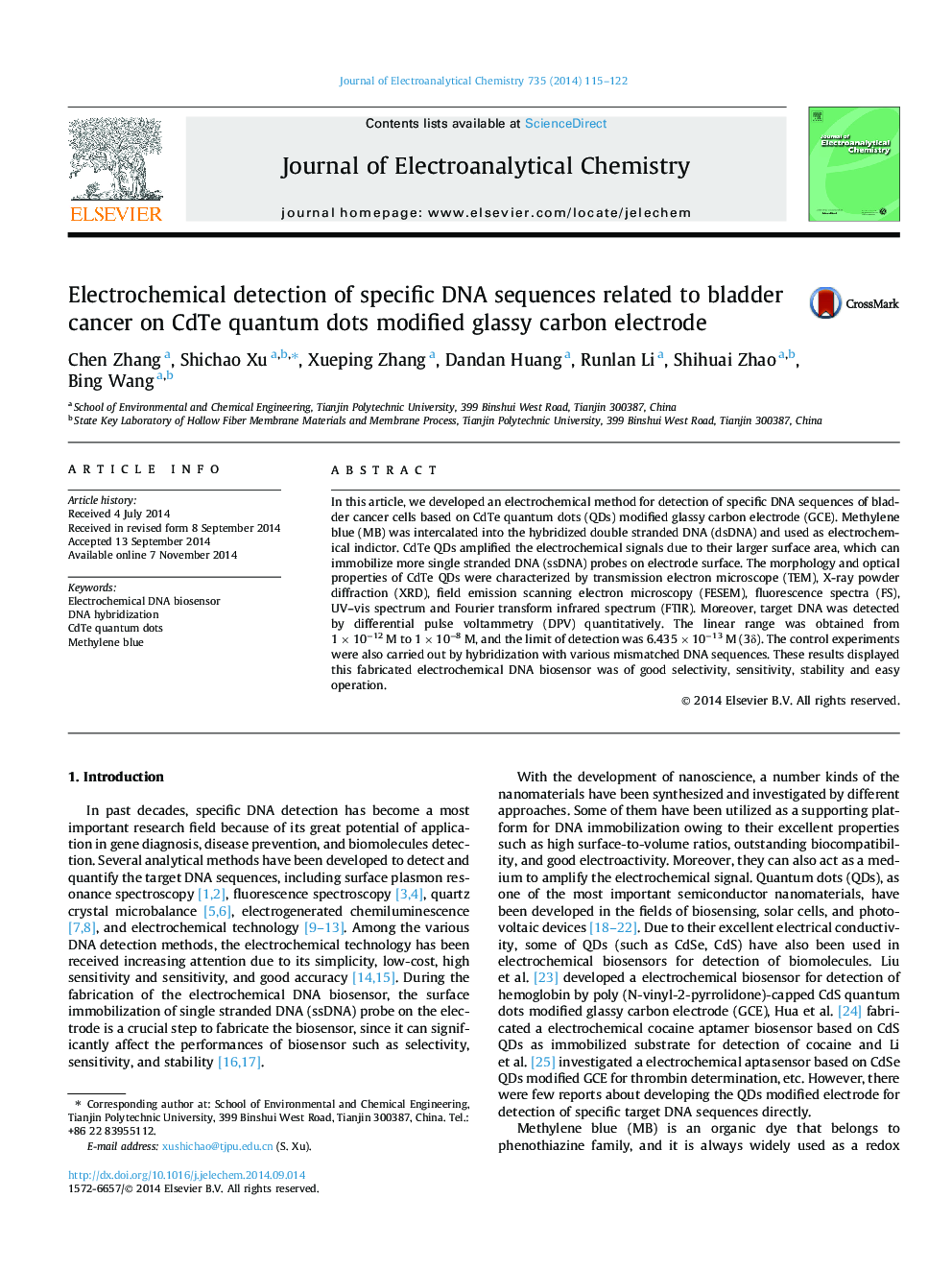| Article ID | Journal | Published Year | Pages | File Type |
|---|---|---|---|---|
| 218623 | Journal of Electroanalytical Chemistry | 2014 | 8 Pages |
•ssDNA sequences were immobilized on CdTe modified glassy carbon electrode by covalent bonds.•CdTe amplified electrical signal of detection due to their larger surface area.•The fabricated DNA biosensor was of high sensitivity and selectivity.
In this article, we developed an electrochemical method for detection of specific DNA sequences of bladder cancer cells based on CdTe quantum dots (QDs) modified glassy carbon electrode (GCE). Methylene blue (MB) was intercalated into the hybridized double stranded DNA (dsDNA) and used as electrochemical indictor. CdTe QDs amplified the electrochemical signals due to their larger surface area, which can immobilize more single stranded DNA (ssDNA) probes on electrode surface. The morphology and optical properties of CdTe QDs were characterized by transmission electron microscope (TEM), X-ray powder diffraction (XRD), field emission scanning electron microscopy (FESEM), fluorescence spectra (FS), UV–vis spectrum and Fourier transform infrared spectrum (FTIR). Moreover, target DNA was detected by differential pulse voltammetry (DPV) quantitatively. The linear range was obtained from 1 × 10−12 M to 1 × 10−8 M, and the limit of detection was 6.435 × 10−13 M (3δ). The control experiments were also carried out by hybridization with various mismatched DNA sequences. These results displayed this fabricated electrochemical DNA biosensor was of good selectivity, sensitivity, stability and easy operation.
